To better understand how game designers create projects the way they do, my class has been requested to analyse some games and game genres we know/own and see how design can make or break a game. This is Task 1 Page 1: Genres – What makes a certain genre a genre?
Party Games
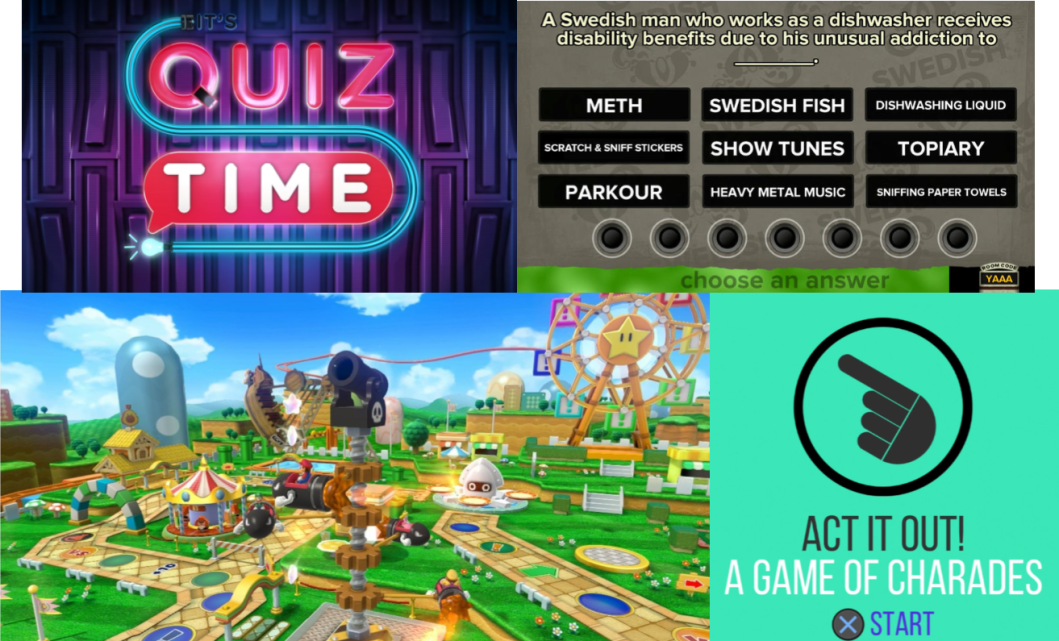
(Image Sources 1, 2, 3, and 4)
Party games are aimed towards families and people with friends who enjoy playing games together/against each other. Some games don’t even need all the players to be in the same country with games like Snap Finger Click’s ACT IT OUT! and It’s Quiz Time providing Twitch support for people to livestream their games and have people interact purely from either the Twitch chat or from an app. This genre is appealing to gamers who like to just play a very basic, quick game that requires little to no skill and can be enjoyed by people who don’t usually play games. Most of these games are filled with mini games that award points depending on how well each individual player did; said points can be tallied to announce a winner of the overall match. Games of this type can be as serious or as goofy as the development team wishes as long as it can be enjoyed by their target audiences. The mechanics can vary from game to game as well, for example; Mario Party tends to be all left to chance where you can easily go from 1st place to 3rd with a simple die toss – let alone the mini games themselves – and the Jack Box Party Pack games are judged by real people where players of the game can rate the answers of the others and random spectators can vote for the ones they like too (depending on what game in the pack you play, some allow spectator voting while others don’t).
Stealth
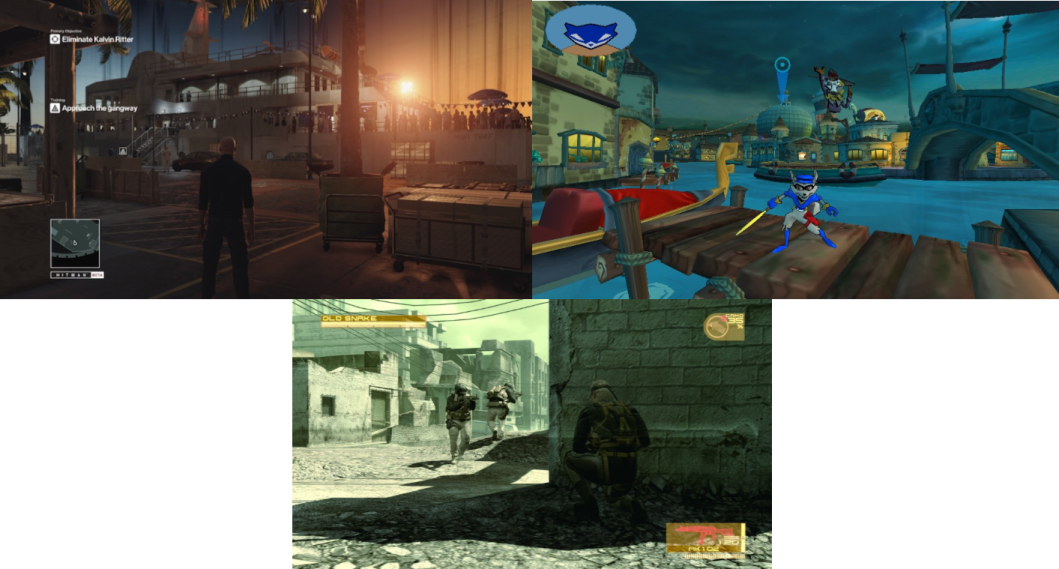
(Image Sources 1, 2, and 3)
Stealth games have a very specific set up where you mostly play as someone who should not be noticed (a spy, criminal, thief, or someone in the military for instance) with a goal of sneaking in enemy bases without getting caught – earning rewards such as a valuable item or the end of a villain’s reign of terror. The target audience can be varied depending on the game’s content and style – the Sly Cooper games are aimed towards young children with slapstick cartoon style of violence and the Hitman series is always given an M/18 rating for the realistic deaths and blood so it’s safe to say the advertising was focused on adults. Stealth games are mostly from a third person perspective to allow for a better view of the player’s surroundings but can change to first person for some scenes. The games of this genre can make audio cues a huge indicator of how the player is doing in a level. Slow, steady and quiet tunes can show that everything is calm and that the player is safe to carry on, if an enemy is nearby/getting suspicious the music can get faster and louder, and if you get caught or the situation is dire the music can be really loud and almost obnoxious – reflecting how the player’s presence is now glaringly obvious. This genre is more for those who don’t like being confrontational from the get go, have little to no skill in video game combat (fighting only if it is unavoidable) and like the ego boost that comes from knowing you are defeating the enemy with the intelligent sentry NPCs being none the wiser.
Shooters
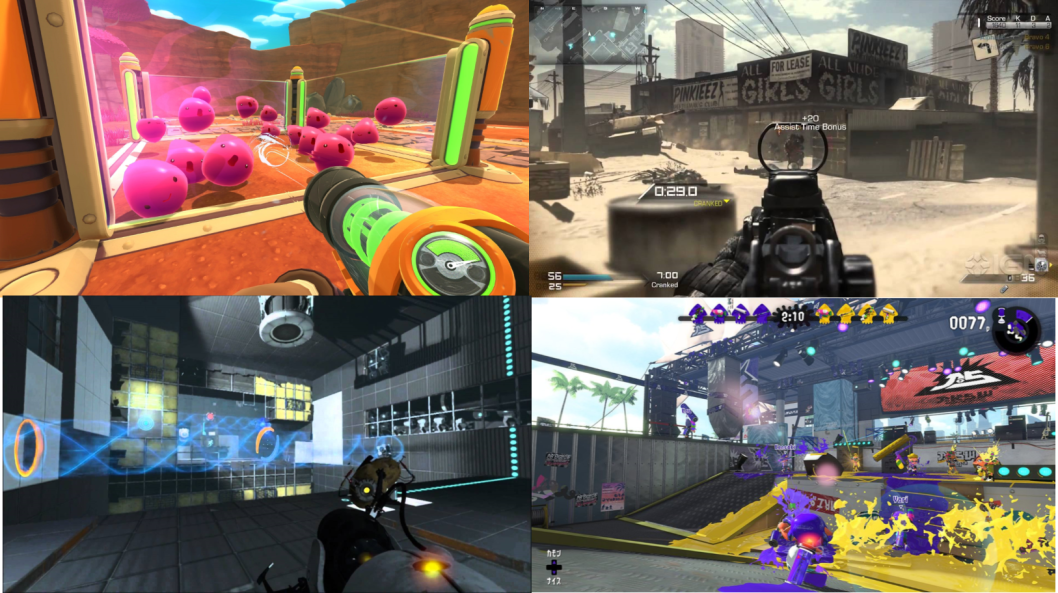
(Image Sources 1, 2, 3, and 4)
Shooters are games that have the player carry a firing weapon to help with reaching the goal of the game. Most of the time these games are violent and focus on a team versus team system, with themes on war and protecting your homeland. However there are shooters that aren’t as angst filled as the above example. Splatoon is a team-based shooter where it is actually not worth anything (leading to win conditions anyway) to attack rivals; it is better to cover as much ground as you can while avoiding enemy fire. Games like Portal and Slime Rancher have little to no combat and use their firing weapon to either solve puzzles or carry items. Shooters can be either from a first or third person perspective, and some can allow you to change between the two options. This is another wild and varied genre with a very diverse audience; the more competitive, dark, hard boiled games are mostly aimed at men 18 and up, the competitive/non-competitive but quirky games have a younger audience and have more women in the fan-bases.
Beat-Em-Up
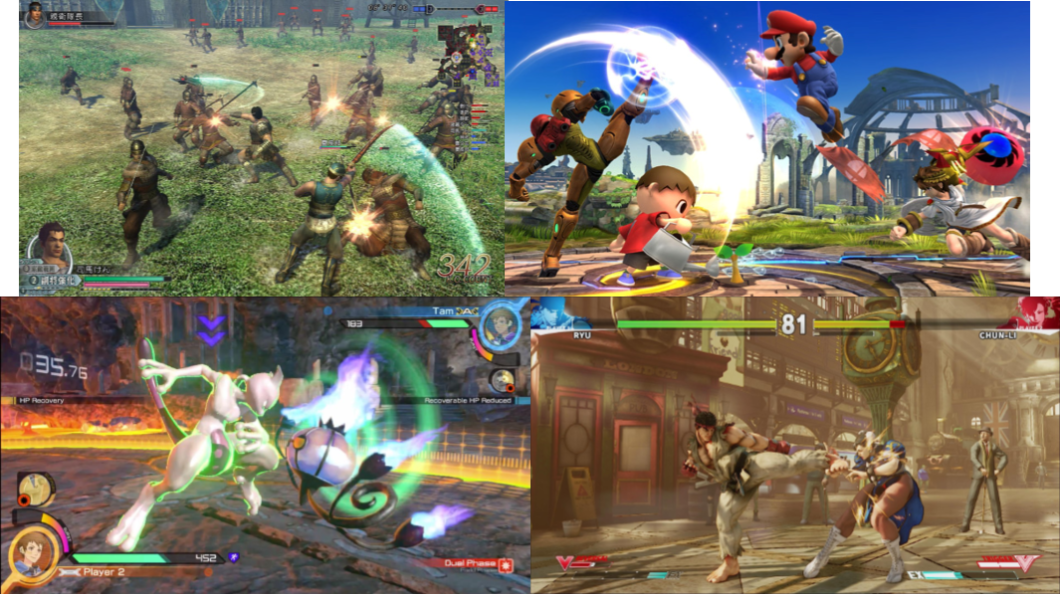
(Image Sources 1, 2, 3, and 4)
Beat-em-up games are pretty self-explanatory; they are fighting games that have a few complex special moves. These games tend to be side-scrolling in the sense that the characters can only move left to right on the stage/platform and the player sees all characters on screen as the camera is fixed to focus on keeping them both in the frame – allowing players to clearly see how they are attacking and when their opponent(s) are preparing a special move. This game is mostly for mature players because of the violence but the gamut of approachable-ness runs from Nintendo’s Smash Bros to Mortal Kombat [I am NOT going to add images of the latter here because I am very squeamish]. There are games that are more open with a circle stage or an entire map to battle on – such as Dynasty Warriors and Pokkén. Every game of this genre has an avid fan-base that is eager to analyse and critique fighting styles to allow the growth of each and every player.
Role-Playing
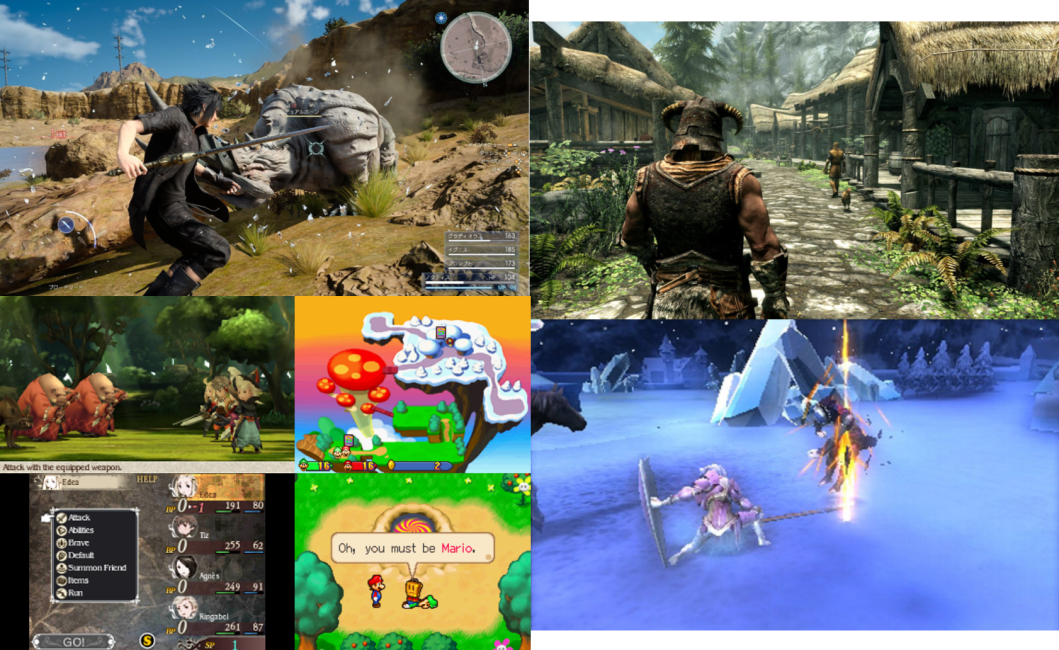
(Image Sources 1, 2, 3, 4, and 5)
Role-Playing Games are games that thrust the player into a very important role in the games story, such as a person who can change the tide of war, protect their home nation or go on an epic journey through the land. A majority of RPGs have a turn-based combat system that focuses more on strategy but there are RPGs that allow a more beat-em-up system. This genre is again very wild and plentifully diverse in taste as there are many kinds of RPG. Games like this tend to be from a 3rd person perspective that allows you to see your characters and enemies clearly. These games appeal to people who prefer to be a part of a big plot or explore wild and wacky places; some players even play some RPGs such as Fire Emblem Awakening and the Fire Emblem Fates games just because you can romance some characters you play alongside. Kids under/close to the age of 10 will most likely enjoy the easy and friendly Mario and Luigi games or Pokémon, teens and adults will probably enjoy titles like FFXV, Skyrim, Fire Emblem and Bravely Default.
Platformer
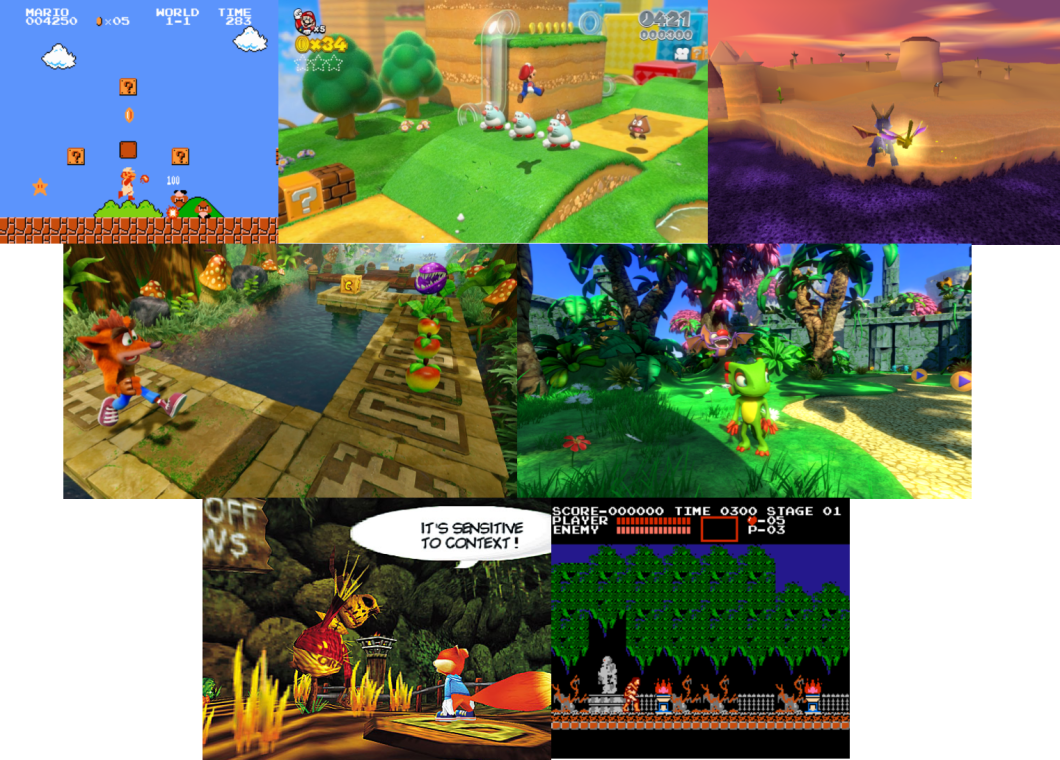
(Image Sources 1, 2, 3, 4, 5, 6, and 7)
Platformer games are the grandfathers of the games industry. These games are one of the oldest and most successful kinds to exist to this day; probably owed to the fact these games can be played by anyone of any age, ability and any preference. Platformers can be in 2D or 3D, side-scrolling or open-ish world, and have any quirky ability the development teams wish to create. These games do have a clear target for younger gamers but there have been exceptions – such as Conker’s Bad Fur Day, a game with a Banjo-Kazooie style but humour you would expect from Family Guy or South Park. Platformers are very simplistic in the sense that the basic controls are universal over almost every single title that describes itself as such; the main place where they shine as individual titles is their design. For example you can clearly tell that Crash Bandicoot and Mario games are both in the same genre, but attract different crowds; Crash being a favourite for skilled “completionists” and Mario is loved by those who enjoy more linear level design. The older Castlevania games could arguably be deemed platformers as they went along a linear path in a 2D side-scrolling world.
That is all for Page 1, I will upload the other four pages later on.
Thank you for reading!